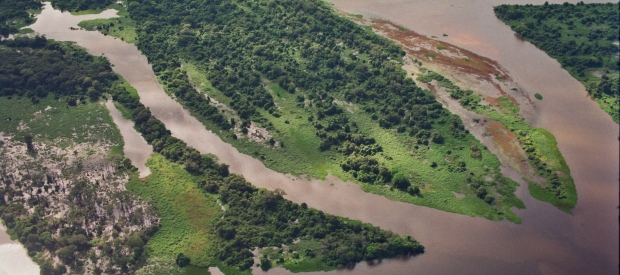Paraguay-Paraná Hidrovia
The hidrovia is a plan by the five countries of the La Plata Basin to convert the Paraguay and Paraná rivers into an industrial shipping channel.
Under the original plan developed in 1997 by the hidrovia Inter–Governmental Commission (CIH), with support from the Inter-American Development Bank and the United Nations Development Program, river alterations including dredging, rock removal, and structural channeling would have taken place at hundreds of sites along the 2,100 mile river system, from Cáceres, Mato Grosso, Brazil to Nueva Palmira, Uruguay. The Pantanal, the world’s largest tropical wetlands, would not have been spared: scientists predict that the channelization of the Paraguay River would cause the wetlands to shrink, with associated losses in biodiversity.
The original studies for this project were resoundingly rejected as a result of independent technical critiques, organized by the Rios Vivos Coalition, which not only disseminated technical objections to the project, but also helped organize a broad–based coalition of environmental, social, and indigenous organizations to discuss alternatives to the hidrovia with local communities throughout the region.
The fate of the hidrovia is still uncertain. The Andean Development Corporation (CAF) has provided the CIH with $940,000 for new studies, to "complement" the original studies. These new studies call for even more intensive dredging and rock removal to guarantee passage of barge convoys through 23 "critical" river passes, including those in the Tamengo Channel (Bolivia) and between Corumbá and the Apa River in the Pantanal.
Civil society organizations are gearing up for a renewed campaign to halt this ill–conceived project and the destruction of the Paraguay and Paraná rivers.
Taller Ecologista de Rosário, Argentine organization which questions the need for the hidrovia.



